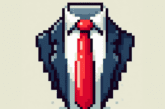
Amadeus admits fare families are not working for all its airlines
aTP- Arab tourism portal News- In a rare example of travel tech humility, Amadeus has admitted that fare families are not generating any revenue for some of its customers.
Using anonymised data from 28 airlines which used its Fare Families product during the first half of the year, Amadeus reveals that there is “huge discrepancy” between airlines – the best of the bunch are seeing conversion rates of 30% – as in for every hundred tickets sold, 30 are an upgrade on the basic price.
The average incremental impact on revenues for these airlines is 15%.
In the middle there are some airlines generating revenue but not as much as the star performers, with a third group “not making revenue”.
Which begs the question, how come Amadeus is selling airlines a product which, in some cases, is not impacting the top line and taking into account the cost of using the product is actually hitting the bottom line?
In response to emailed questions, Pedro Espin, associate director of merchandising and personalisation for Amadeus, said:
“Our merchandising technology enables airlines [to serve their customers better] but technology is just a means to an end. Airlines also need to have a deep understanding of their customers’ needs and based on that understanding, develop products that add value to them, in a commercially sound way.”
He continued along the lines that “fare families” and “merchandising” are new ideas and that best practice has yet to emerge.
“The explosion of merchandising content and techniques [means that] new products will come up, and there won’t always be a straightforward answer as to what will work, what won’t, or how to implement new content and techniques.”
“In some cases, experimentation will be required and a ‘learn as you go’ process will have to be assumed because it may well be the case that there is no historical data.”
Amadeus appears to be aware of this and is crunching data points from its clients to find out what these best practices are. Espin said that as more data emerges it will be in a better position to help airlines get more revenue from the fare families.
The secret to success – namely the 15% revenue lift from a 30% hike in conversions – is keeping it simple, with Amadeus referencing its inner trip-hop persona and declaring that “three is the magic number”.
It adopted a more corporate tone to explain that the services on offer in each fare family and the pricing increments between them should “offer a clear proposition and avoid the paradox of choice.”
So the template is to have three different families on offer. In many ways this isn’t a million RPKs away from what full-service legacy carriers were doing – economy, business and first – before the rise of the single-class LCCs and online direct distribution.
And within each of the three fares, there are three service levels – core, preference and extras. Core services apply across all families. Preference is the money shot, where the bulk of services passengers are willing to pay for should be directed. These are identified as checked baggage, assigned seating or flexible change and refund terms and conditions. Extras are described as “nice to haves but are not key drivers of the upsell” and could include bonus miles or even more flexibility on changes.
The airlines which are not making revenue are guilty of – you’ve guessed it – three mistakes – too big a difference in the cost of upgrading to next level; having too many services in the basic price which limits what can be included in the next level; or having too many or too few different fare families products on offer.
But even this “rule of three” approach is presented with a caveat:
“By no means are we suggesting that this is a conclusive guide to Fare Family success” Espin said, “rather some conclusions around those cases that are showing positive results”.
Source :https://www.tnooz.com/article







